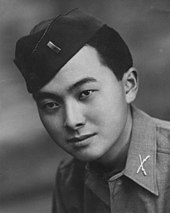
A soldier is a person who is a member of an army. A soldier can be a conscripted or volunteer enlisted person, a non-commissioned officer, a warrant officer, or an officer.

The Selective Service System (SSS) is an independent agency of the United States government that maintains a database of registered U.S. citizens and other U.S. residents potentially subject to military conscription. Although the U.S. military is currently an All-Volunteer Force, registration is still required for contingency planning and preparation for two types of draft: a general draft based on registration lists of people assigned male at birth, aged 18–25, and a special-skills draft based on professional licensing lists of workers in specified health care occupations. In the event of either type of draft, the Selective Service System would send out induction notices, adjudicate claims for deferments or exemptions, and assign draftees classified as conscientious objectors to alternative service work. All male U.S. citizens and immigrant non-citizens who are between the ages of 18 and 25 are required by law to have registered within 30 days of their 18th birthdays, and must notify the Selective Service within ten days of any changes to any of the information they provided on their registration cards, such as a change of address. The Selective Service System is a contingency mechanism for the possibility that conscription becomes necessary.

In the United States of America, military conscription, commonly known as the draft, has been employed by the U.S. federal government in six conflicts: the American Revolutionary War, the American Civil War, World War I, World War II, the Korean War, and the Vietnam War. The fourth incarnation of the draft came into being in 1940, through the Selective Training and Service Act; this was the country's first peacetime draft. From 1940 until 1973, during both peacetime and periods of conflict, men were drafted to fill vacancies in the U.S. Armed Forces that could not be filled through voluntary means. Active conscription in the United States ended in 1973, when the U.S. Armed Forces moved to an all-volunteer military. However, conscription remains in place on a contingency basis; all male U.S. citizens, regardless of where they live, and male immigrants, whether documented or undocumented, residing within the United States, who are 18 through 25 are required to register with the Selective Service System. United States federal law also continues to provide for the compulsory conscription of men between the ages of 17 and 44 who are, or who have made a declaration of intention to become, U.S. citizens, and additionally certain women, for militia service pursuant to Article I, Section 8 of the United States Constitution and 10 U.S. Code § 246.

Women have been serving in the military since the inception of organized warfare, in both combat and non-combat roles. Their inclusion in combat missions has increased in recent decades, often serving as pilots, mechanics, and infantry officers.

The Selective Service Act of 1917 or Selective Draft Act authorized the United States federal government to raise a national army for service in World War I through conscription. It was envisioned in December 1916 and brought to President Woodrow Wilson's attention shortly after the break in relations with Germany in February 1917. The Act itself was drafted by then-Captain Hugh S. Johnson after the United States entered World War I by declaring war on Germany. The Act was canceled with the end of the war on November 11, 1918. The Act was upheld as constitutional by the United States Supreme Court in 1918.
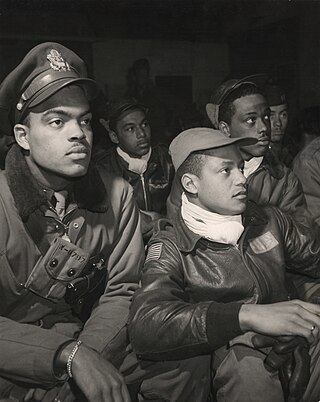
The military history of African Americans spans African-American history, the history of the United States and the military history of the United States from the arrival of the first enslaved Africans during the colonial history of the United States to the present day. African Americans have participated in every war which has been fought either by or within the United States, including the Revolutionary War, the War of 1812, the Mexican–American War, the Civil War, the Spanish–American War, World War I, World War II, the Korean War, the Vietnam War, the Gulf War, the War in Afghanistan, and the Iraq War.

Puerto Ricans and people of Puerto Rican descent have participated as members of the United States Armed Forces in the American Civil War and in every conflict which the United States has been involved since World War I. In World War II, more than 65,000 Puerto Rican service members served in the war effort, including the guarding of U.S. military installations in the Caribbean and combat operations in the European and Pacific theatres.

Hispanic Americans, also referred to as Latinos, served in all elements of the American armed forces in the war. They fought in every major American battle in the war. Between 400,000 and 500,000 Hispanic Americans served in the U.S. Armed Forces during World War II, out of a total of 16,000,000, constituting 3.1% to 3.2% of the U.S. Armed Forces. The exact number is unknown as, at the time, Hispanics were not tabulated separately, but were included in the general white population census count. Separate statistics were kept for African Americans and Asian Americans.
Hispanics in the United States Marine Corps, such as Private France Silva who during the Boxer Rebellion became the first Marine of the thirteen Marines of Latin American descent to be awarded the Medal of Honor, and Private First Class Guy Gabaldon who is credited with capturing over 1,000 enemy soldiers and civilians during World War II, have distinguished themselves in combat. Hispanics have participated as members of the United States Marine Corps in the Boxer Rebellion, World War I, the American intervention in Latin America also known as the Banana Wars, World War II, the Korean War, the Vietnam War, the Gulf War and most recently in the military campaigns of Afghanistan and Iraq.

Military sociology is a subfield within sociology. It corresponds closely to C. Wright Mills's summons to connect the individual world to broader social structures. Military sociology aims toward the systematic study of the military as a social group rather than as a military organization. This highly specialized sub-discipline examines issues related to service personnel as a distinct group with coerced collective action based on shared interests linked to survival in vocation and combat, with purposes and values that are more defined and narrow than within civil society. Military sociology also concerns civil-military relations and interactions between other groups or governmental agencies.
Puerto Ricans and people of Puerto Rican descent have participated as members of the United States Armed Forces in every conflict in which the United States has been involved since World War I.
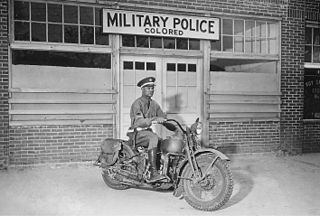
African Americans have served the U.S. military in every war the United States has fought. Formalized discrimination against black people who have served in the U.S. military lasted from its creation during the American Revolutionary War to the end of segregation by President Harry S. Truman's Executive Order 9981 in 1948. Although desegregation within the U.S. military was legally established with President Truman's executive order, full integration of African-American servicemen was not established until 1950 in the Navy and Air Force, 1953 in the Army, and 1960 in the Marine Corps.

The United States declared war on the German Empire on April 6, 1917, nearly three years after World War I started. A ceasefire and armistice were declared on November 11, 1918. Before entering the war, the U.S. had remained neutral, though it had been an important supplier to the United Kingdom, France, and the other powers of the Allies of World War I.

The 65th Infantry Regiment, nicknamed "The Borinqueneers" during the Korean War for the original Arawak Indian name for Puerto Rico (Borinquen), is a Puerto Rican regiment of the United States Army. The regiment's motto is Honor et Fidelitas, Latin for Honor and Fidelity. The Army Appropriation Bill created by an act of Congress on 2 March 1899 authorized the creation of the first body of native troops in Puerto Rico. On 30 June 1901, the "Porto Rico Provisional Regiment of Infantry" was organized. On 1 July 1908, Congress incorporated the regiment into the Regular Army as the Puerto Rico Regiment of Infantry, United States Army. On 14 May 1917, the regiment was activated and additional men were assigned, with the unit being sent to serve at Panama. On 4 June 1920, the regiment was renamed 65th Infantry. During World War II, the regiment saw action throughout Europe, especially France and Germany, participating in Naples-Foggia, Rome-Arno and Rhin. Several Purple Hearts were awarded posthumously to members of the 65th Regiment.
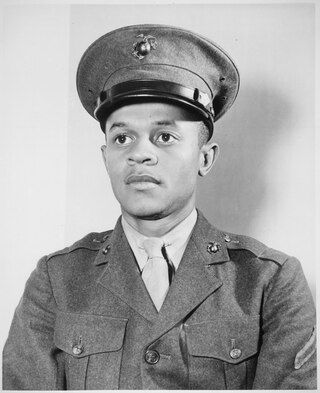
The United States Marine Corps (USMC) is a desegregated force, made up of troops of all races working and fighting alongside each other. In 1776 and 1777, a dozen African American Marines served in the American Revolutionary War, but from 1798 to 1942, the USMC followed a racially discriminatory policy of denying African Americans the opportunity to serve as Marines. For more than 140 years, the Marines recruited primarily European Americans and Hispanic and Latino Americans, along with a few Asian Americans.

A series of policies were formerly issued by the U.S. military which entailed the separation of white and non-white American soldiers, prohibitions on the recruitment of people of color and restrictions of ethnic minorities to supporting roles. Since the American Revolutionary War, each branch of the United States Armed Forces implemented differing policies surrounding racial segregation. Racial discrimination in the U.S. military was officially opposed by Harry S. Truman's Executive Order 9981 in 1948. The goal was equality of treatment and opportunity. Jon Taylor says, "The wording of the Executive Order was vague because it neither mentioned segregation or integration." Racial segregation was ended in the mid-1950s.
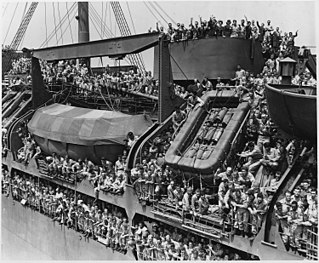
The Demobilization of United States armed forces after the Second World War began with the defeat of Germany in May 1945 and continued through 1946. The United States had more than 12 million men and women in the armed forces at the end of World War II, of whom 7.6 million were stationed abroad. The American public demanded a rapid demobilization and soldiers protested the slowness of the process. Military personnel were returned to the United States in Operation Magic Carpet. By June 30, 1947, the number of active duty soldiers, sailors, Marines, and airmen in the armed forces had been reduced to 1,566,000.

American women in World War II became involved in many tasks they rarely had before; as the war involved global conflict on an unprecedented scale, the absolute urgency of mobilizing the entire population made the expansion of the role of women inevitable. Their services were recruited through a variety of methods, including posters and other print advertising, as well as popular songs. Among the most iconic images were those depicting "Rosie the Riveter", a woman factory laborer performing what was previously considered man's work.
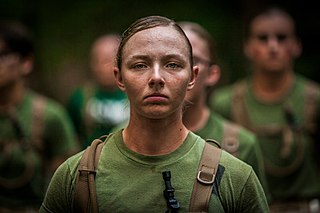
There have been women in the United States Marine Corps since 1918, and women continue to serve in the Corps today. As of 2020, women make up 8.9% of total active duty Marines. The Marine Corps has the lowest percent of female service members of all of the U.S military branches. Women's presence in the Marine Corps first emerged in 1918 when they were permitted to do administrative work in an attempt to fill the spots of male Marines fighting overseas. It was not until 1948 that women were able to become a permanent part of the Corps with the passing of the Women's Armed Services Integration Act. However, even with the Integration Act, women were still banned from certain military occupation specialties. It was not until 2016 that Defense Secretary Ash Carter announced that all military occupations would be open to women without exception. As of 2018, there were 18 women serving in the Marine Corps combat arms. In December 2020, the Marine Corps Recruit Depot San Diego agreed to join the Marine Corps Recruit Depot Parris Island in accepting female recruits, with 60 female recruits starting their boot camp training at the San Diego depot in February 2021. 53 of these recruits would successfully graduate from boot camp in April 2021 and become Marines.
